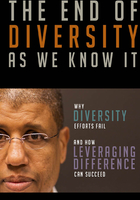
Current Approaches to Diversity Are Failing
Aaron and Eileen are but two examples of how the admirably passionate pursuit of diversity in organizations has fallen short. Employees, regardless of identity, remain confused, frustrated, and disheartened by the way diversity is managed. Annual reports and websites like Chevron Corporation’s boldly proclaim that “having a workforce that reflects the composition of the marketplaces we serve and the communities where we operate is an important competitive advantage.” Diversity celebrations abound, with ethnic food days and diversity awareness seminars peppered throughout the year. Companies use such activities to communicate that they are committed to diversity and thriving because of it. In fact, commitment frequently wavers, and more than two decades of research shows that very few organizations are actually thriving because of their diversity.
Diversity celebrations abound, with ethnic food days and diversity awareness seminars peppered throughout the year. Companies use such activities to communicate that they are committed to diversity and thriving because of it. In fact, commitment frequently wavers, and more than two decades of research shows that very few organizations are actually thriving because of their diversity.
Greater diversity does not easily translate to greater excellence in performance. It takes work to make that happen. Yet many leaders are content in the illusion that symbolic activities and underfunded training classes will turn their increasingly diverse organizations into world-class performers. It’s not that these symbolic activities don’t have merit. They often help illuminate the experiences of marginalized and undervalued members of the organization. But they don’t make the organization truly more inclusive, and they don’t catalyze the performance the organization needs to remain competitive in a dynamic global marketplace.
Most leaders don’t doubt the potential of diversity to add value, and they certainly don’t intend to disempower and confuse their employees. Yet they do both of these things. And changing that dysfunctionality begins with looking at the facts about the current state of diversity.